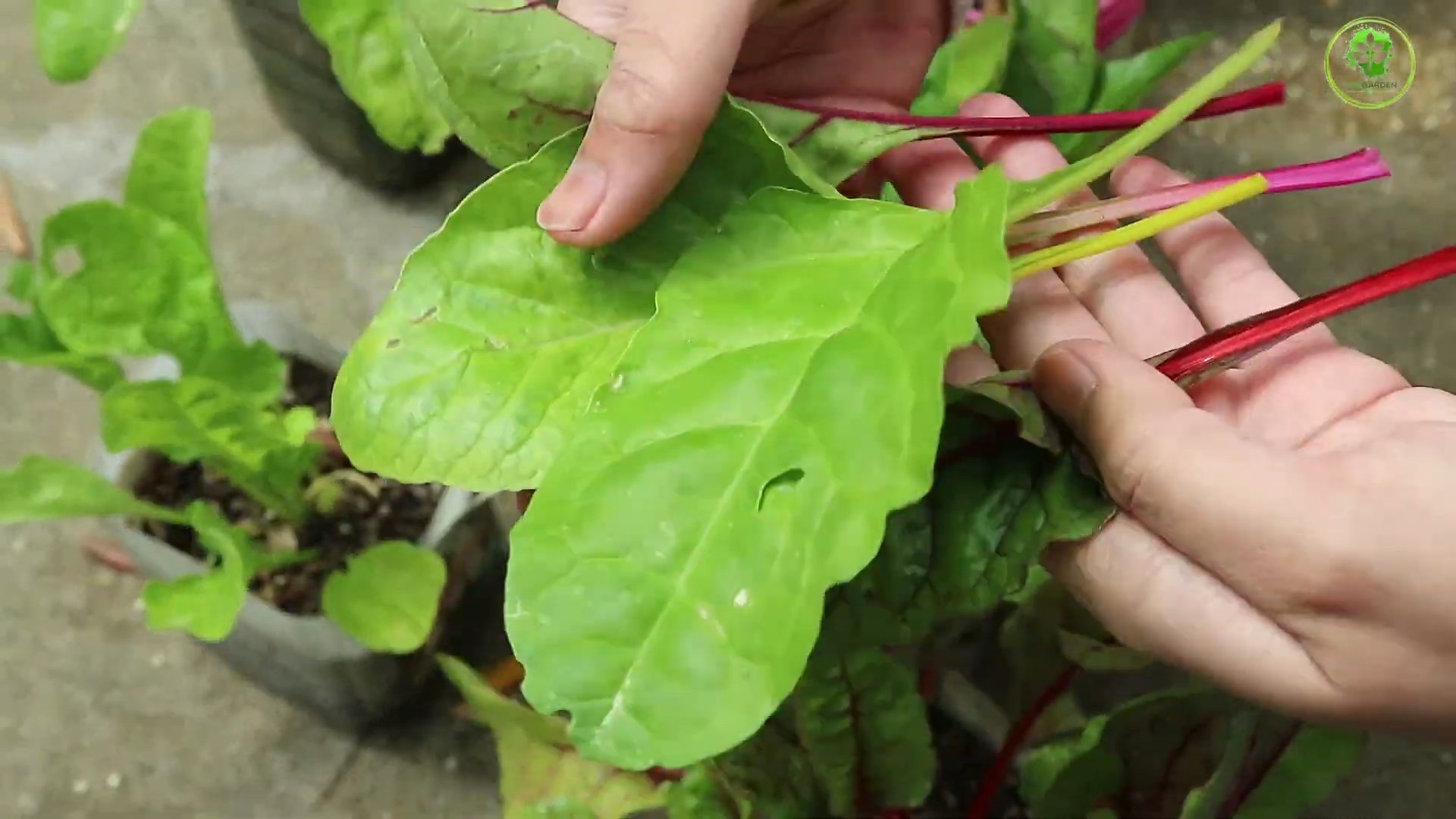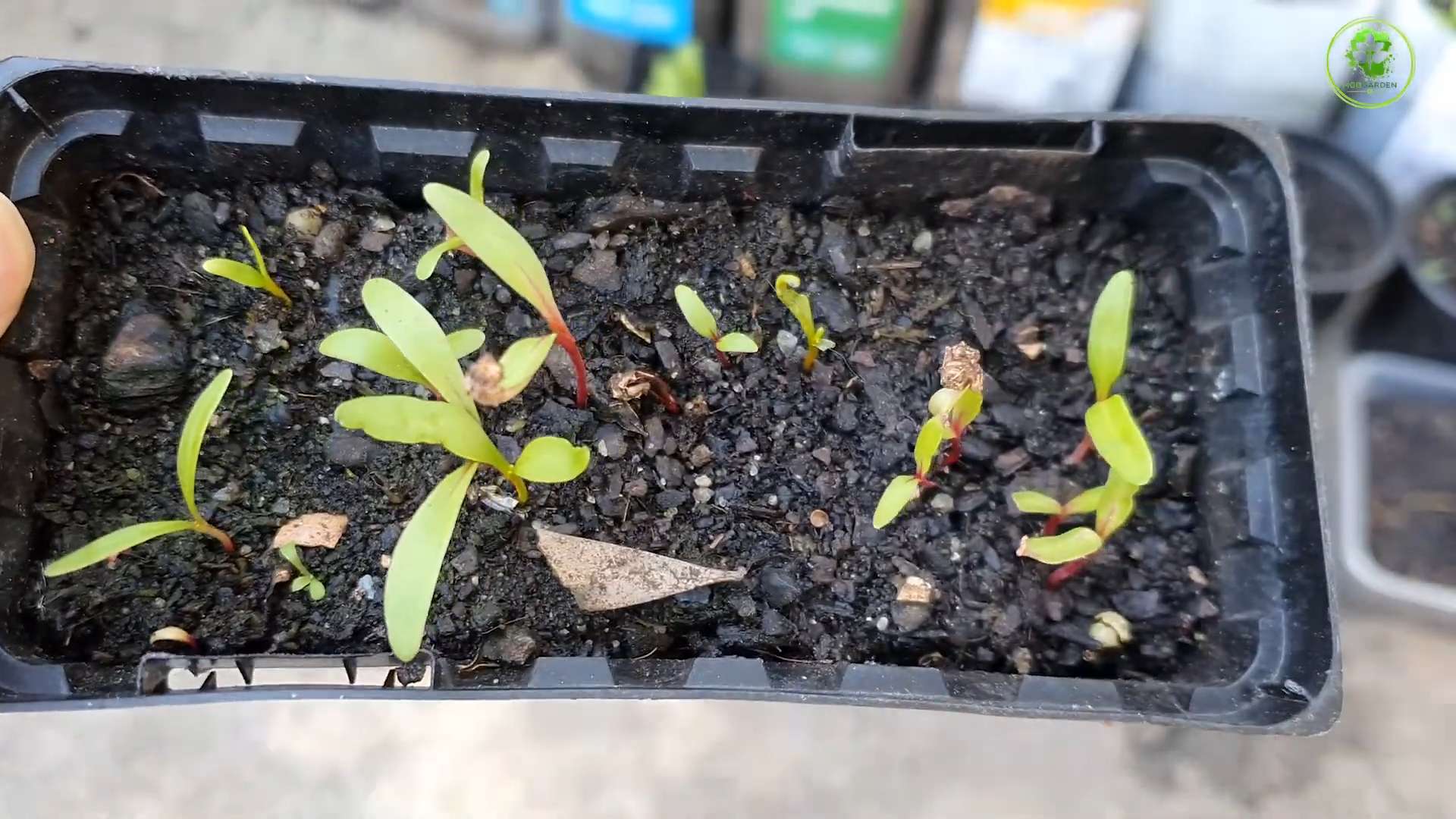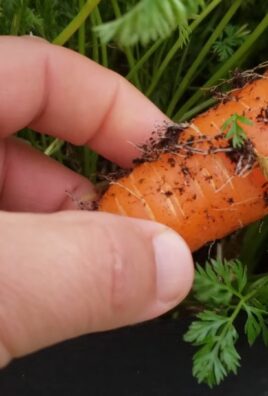Grow Swiss Chard Indoors? Absolutely! Imagine fresh, vibrant Swiss chard gracing your plate, even when the snow is falling outside. Forget those sad, wilted greens from the grocery store – with a few simple tricks, you can cultivate your own thriving Swiss chard patch right in your home.
For centuries, leafy greens like Swiss chard have been a staple in diets around the world, prized for their nutritional value and versatility. From hearty soups in the Swiss Alps (hence the name!) to vibrant salads in the Mediterranean, this leafy vegetable has nourished generations. But who says you need a sprawling garden to enjoy its benefits?
In today’s busy world, access to fresh, healthy produce can be a challenge. That’s where the magic of indoor gardening comes in! Learning how to grow Swiss Chard Indoors offers a fantastic solution, allowing you to bypass the unpredictable weather and enjoy a continuous supply of this nutritious green. Plus, it’s incredibly rewarding to nurture your own food from seed to table. So, ditch the store-bought greens and get ready to embark on a fun and fulfilling indoor gardening adventure! I’m here to guide you through every step, sharing my favorite DIY tricks and hacks to ensure your indoor Swiss chard garden flourishes.

Growing Swiss Chard Indoors: A Beginner’s Guide
Hey there, fellow plant enthusiasts! Ever thought about growing your own vibrant, nutritious Swiss chard right inside your home? It’s easier than you might think, and I’m here to guide you through the whole process. Forget those bland supermarket greens – get ready for fresh, homegrown goodness!
Choosing the Right Variety and Setting Up Your Space
Before we get our hands dirty, let’s talk about the essentials. Not all Swiss chard varieties are created equal when it comes to indoor growing.
* **Variety Selection:** Opt for compact varieties like ‘Bright Lights’ (for a colorful display!) or ‘Fordhook Giant’ (a reliable and productive choice). These tend to be more manageable in containers.
* **Lighting is Key:** Swiss chard needs at least 6 hours of direct sunlight per day. If you don’t have a sunny windowsill, invest in a grow light. Fluorescent or LED grow lights work wonders. I personally use LED grow lights because they are energy efficient and don’t produce much heat.
* **Container Choice:** Choose a pot that’s at least 6-8 inches deep and wide. Good drainage is crucial, so make sure your pot has drainage holes. I prefer using terracotta pots because they allow the soil to breathe.
* **Soil Matters:** Use a well-draining potting mix. Avoid using garden soil, as it can compact and hinder drainage. A mix of potting soil, perlite, and vermiculite is ideal.
Planting Your Swiss Chard Seeds
Now for the fun part – planting!
1. **Prepare Your Pot:** Fill your chosen pot with the potting mix, leaving about an inch of space at the top. Gently pat down the soil.
2. **Sow the Seeds:** Sow the Swiss chard seeds about ½ inch deep and 1 inch apart. You can plant a few extra seeds to ensure germination.
3. **Water Gently:** Water the soil gently until it’s evenly moist. Avoid overwatering, which can lead to seed rot.
4. **Provide Warmth:** Swiss chard seeds germinate best in temperatures between 60-70°F (15-21°C). You can use a heat mat to speed up germination, but it’s not essential.
5. **Patience is a Virtue:** Germination usually takes about 5-10 days. Keep the soil consistently moist during this time.
Caring for Your Indoor Swiss Chard
Once your seedlings emerge, it’s time to provide them with the care they need to thrive.
1. **Thinning Seedlings:** Once the seedlings have a few true leaves (the second set of leaves), thin them out, leaving only the strongest seedlings about 3-4 inches apart. This gives them enough room to grow.
2. **Watering Regularly:** Water your Swiss chard when the top inch of soil feels dry to the touch. Avoid overwatering, as this can lead to root rot. I usually water mine every 2-3 days, but it depends on the humidity and temperature in my home.
3. **Fertilizing:** Feed your Swiss chard every 2-3 weeks with a balanced liquid fertilizer. Follow the instructions on the fertilizer packaging. I like to use an organic fertilizer to keep things natural.
4. **Providing Adequate Light:** Ensure your Swiss chard receives at least 6 hours of direct sunlight or 12-14 hours of artificial light per day. Rotate the pot regularly to ensure even growth.
5. **Temperature Control:** Swiss chard prefers temperatures between 60-75°F (15-24°C). Avoid exposing your plants to extreme temperatures.
6. **Pest Control:** Keep an eye out for pests like aphids or spider mites. If you spot any, treat them with insecticidal soap or neem oil. I always try to catch pests early before they become a major problem.
7. **Air Circulation:** Good air circulation helps prevent fungal diseases. You can use a small fan to improve air circulation around your plants.
Harvesting Your Homegrown Swiss Chard
The best part – harvesting!
1. **When to Harvest:** You can start harvesting Swiss chard leaves when they are about 6 inches long.
2. **How to Harvest:** Harvest the outer leaves first, leaving the inner leaves to continue growing. Use a sharp knife or scissors to cut the leaves near the base of the plant.
3. **Succession Planting:** To ensure a continuous harvest, sow new seeds every few weeks. This is called succession planting.
4. **Enjoy Your Harvest:** Use your fresh Swiss chard in salads, soups, stir-fries, or any other dish you like. It’s a versatile and nutritious vegetable.
Troubleshooting Common Issues
Even with the best care, you might encounter some issues. Here are a few common problems and how to solve them:
* **Yellowing Leaves:** This could be a sign of overwatering, underwatering, or nutrient deficiency. Adjust your watering schedule and fertilize your plants regularly.
* **Leggy Growth:** This indicates insufficient light. Move your plants to a sunnier location or provide supplemental lighting.
* **Pest Infestations:** Treat pests with insecticidal soap or neem oil. Regularly inspect your plants for signs of pests.
* **Slow Growth:** This could be due to poor soil, insufficient light, or low temperatures. Ensure your plants have well-draining soil, adequate light, and a comfortable temperature.
Extending the Harvest
Want to keep that Swiss chard coming? Here are a few tips to extend your harvest:
* **Cut Flower Stalks:** If your Swiss chard starts to bolt (produce flower stalks), cut them off immediately. Bolting can make the leaves bitter.
* **Overwintering:** In mild climates, you can overwinter your Swiss chard indoors. Provide it with adequate light and water throughout the winter.
* **Succession Planting:** As mentioned earlier, succession planting is key to a continuous harvest.
Choosing the Right Grow Lights
If you’re relying on artificial light, selecting the right grow light is crucial. Here’s a breakdown:
* **LED Grow Lights:** These are energy-efficient, long-lasting, and produce minimal heat. They’re a great option for indoor growing. Look for full-spectrum LED grow lights for optimal results.
* **Fluorescent Grow Lights:** These are more affordable than LED grow lights, but they’re less energy-efficient and produce more heat. T5 fluorescent grow lights are a good choice for Swiss chard.
* **Incandescent Lights:** Avoid using incandescent lights, as they produce very little usable light for plants and generate a lot of heat.
Understanding Soil pH
Swiss chard prefers a slightly acidic to neutral soil pH of 6.0 to 7.0. You can test your soil pH using a soil testing kit. If your soil is too alkaline, you can amend it with sulfur or peat moss. If it’s too acidic, you can add lime.
Companion Planting
Companion planting can benefit your Swiss chard by attracting beneficial insects and repelling pests. Good companion plants for Swiss chard include:
* **Marigolds:** Repel nematodes and other pests.
* **Nasturtiums:** Attract aphids away from your Swiss chard.
* **Garlic:** Repels aphids and other pests.
* **Onions:** Repel aphids and other pests.
Saving Swiss Chard Seeds
If you want to save seeds from your Swiss chard, allow a few plants to bolt and produce flowers. Once the seed pods are dry and brown, harvest them and extract the seeds. Store the seeds in a cool, dry place. Keep in mind that Swiss chard can cross-pollinate with other members of the beet family, so if you’re growing multiple varieties, the seeds may not be true to type.
Dealing with Root Rot
Root rot is a common problem in indoor plants, especially when overwatering occurs. If you suspect root rot, here’s what to do:
1. **Remove the Affected Plant:** Carefully remove the Swiss chard plant from its pot.
2. **Inspect the Roots:** Examine the roots for signs of rot, such as brown, mushy roots.
3. **Trim the Roots:** Use clean scissors or pruning shears to trim away any rotted roots.
4. **Repot the Plant:** Repot the plant in fresh, well-draining potting mix.
5. **Adjust Watering:** Reduce your watering frequency and ensure the pot has good drainage.
Boosting Growth with Epsom Salts
Epsom salts (magnesium sulfate) can help boost the growth of your Swiss chard. Magnesium is an essential nutrient for plant growth. Dissolve 1 tablespoon of Epsom salts in 1 gallon of water and use this solution to water your plants every 4-6 weeks.
Using Coffee Grounds as Fertilizer
Coffee grounds are a great source of nitrogen, which is essential for leafy green vegetables like Swiss chard. You can sprinkle coffee grounds around the base of your plants or add them to your compost pile. Make sure to use used coffee grounds, as

Conclusion
So, there you have it! Growing Swiss chard indoors is not only possible, but it’s also surprisingly rewarding. Forget those wilted, overpriced greens at the grocery store. Imagine stepping into your kitchen and harvesting fresh, vibrant Swiss chard whenever you need it. The taste difference alone is enough to convince anyone to give this a try. The crisp, slightly earthy flavor of homegrown Swiss chard is simply unmatched.
But the benefits extend far beyond just superior taste. By cultivating your own Swiss chard indoors, you’re taking control of your food source. You know exactly what’s going into your plants – no harmful pesticides or herbicides. You’re also reducing your carbon footprint by eliminating the transportation required to get those greens from farm to store to your table. Plus, let’s be honest, there’s something incredibly satisfying about nurturing a plant from seed to harvest. It’s a little bit of nature’s magic right in your own home.
This method of growing Swiss chard indoors is a must-try for anyone looking to add fresh, healthy greens to their diet, regardless of their outdoor space. It’s perfect for apartment dwellers, city residents, or anyone who simply wants to enjoy the convenience of homegrown produce year-round.
Don’t be afraid to experiment with different varieties of Swiss chard. ‘Bright Lights’ is a popular choice for its colorful stems, adding a visual appeal to your indoor garden. You can also try ‘Fordhook Giant’ for its large, dark green leaves, or ‘Ruby Red’ for its striking red stalks. Consider companion planting with herbs like basil or parsley to create a thriving and fragrant indoor ecosystem. You can even use the harvested Swiss chard in a variety of dishes, from simple sautéed sides to hearty soups and stews. Get creative and explore the culinary possibilities!
We’ve provided you with all the essential information to get started, from selecting the right containers and soil to providing adequate light and water. Now, it’s your turn to put these tips into practice. We are confident that you will find success in your indoor gardening journey.
We encourage you to embark on this exciting adventure and experience the joy of growing your own Swiss chard indoors. Don’t hesitate to share your experiences with us! We’d love to hear about your successes, challenges, and any unique tips you discover along the way. Post pictures of your thriving Swiss chard plants, share your favorite recipes, and connect with other indoor gardening enthusiasts. Let’s create a community of passionate growers and inspire others to embrace the benefits of homegrown produce. So, grab your seeds, prepare your soil, and get ready to enjoy the delicious rewards of your own indoor Swiss chard garden!
Frequently Asked Questions (FAQ)
What are the best varieties of Swiss chard to grow indoors?
While most Swiss chard varieties can be grown indoors, some are better suited than others due to their size and growth habits. ‘Bright Lights’ is a popular choice because of its vibrant, colorful stems, which add a decorative element to your indoor garden. ‘Fordhook Giant’ is another excellent option, known for its large, dark green leaves and robust growth. ‘Ruby Red’ is also a visually appealing variety with its striking red stalks. Consider the size of your growing space when selecting a variety. Smaller varieties might be more manageable in limited spaces. Experimenting with different varieties is a great way to discover your personal favorite.
How much light does Swiss chard need when grown indoors?
Swiss chard requires a significant amount of light to thrive indoors. Ideally, it needs at least 6-8 hours of direct sunlight per day. If you don’t have a sunny windowsill, you’ll need to supplement with artificial lighting. Grow lights are an excellent option, providing the necessary spectrum of light for healthy growth. Fluorescent or LED grow lights are energy-efficient and can be placed close to the plants without burning them. Position the lights about 6-12 inches above the plants and adjust as they grow. Insufficient light can lead to leggy growth and reduced yields.
What type of soil is best for growing Swiss chard indoors?
Swiss chard prefers well-draining soil that is rich in organic matter. A good potting mix specifically formulated for vegetables is a great choice. You can also create your own mix by combining equal parts of potting soil, compost, and perlite or vermiculite. Compost provides essential nutrients, while perlite or vermiculite improves drainage and aeration. Avoid using garden soil, as it can be too heavy and may contain pests or diseases. Ensure the soil is slightly acidic to neutral, with a pH between 6.0 and 7.0.
How often should I water my indoor Swiss chard plants?
Water your Swiss chard plants regularly, keeping the soil consistently moist but not waterlogged. The frequency of watering will depend on factors such as the size of the container, the temperature, and the humidity. Check the soil moisture by sticking your finger about an inch deep. If the soil feels dry, it’s time to water. Water deeply, allowing the excess water to drain out of the bottom of the container. Avoid overwatering, as this can lead to root rot.
How do I fertilize my indoor Swiss chard plants?
Swiss chard is a heavy feeder and benefits from regular fertilization. Use a balanced liquid fertilizer diluted to half strength every 2-3 weeks. Look for a fertilizer with an NPK ratio (nitrogen, phosphorus, potassium) of around 10-10-10 or 20-20-20. You can also use organic fertilizers such as compost tea or fish emulsion. Avoid over-fertilizing, as this can lead to excessive leaf growth and reduced flavor.
How do I harvest Swiss chard leaves?
You can begin harvesting Swiss chard leaves when they are about 6-8 inches long. Harvest the outer leaves first, leaving the inner leaves to continue growing. This cut-and-come-again method allows you to harvest continuously for several weeks. Use a sharp knife or scissors to cut the leaves near the base of the plant. Avoid pulling the leaves, as this can damage the plant.
What are some common pests and diseases that affect indoor Swiss chard?
While indoor plants are generally less susceptible to pests and diseases than outdoor plants, they can still be affected. Common pests include aphids, spider mites, and whiteflies. Inspect your plants regularly for signs of infestation. If you find pests, you can try washing them off with a strong stream of water or using insecticidal soap. Diseases such as powdery mildew and leaf spot can also occur. Ensure good air circulation and avoid overwatering to prevent these diseases. Remove any infected leaves promptly.
Can I grow Swiss chard from seed indoors?
Yes, growing Swiss chard from seed indoors is a great way to start your indoor garden. Sow the seeds about ½ inch deep in a seed-starting mix. Keep the soil moist and warm (around 70-75°F). The seeds should germinate in about 5-10 days. Once the seedlings have developed a few true leaves, you can transplant them into larger containers.
How long does it take to grow Swiss chard indoors?
From seed to harvest, it typically takes about 50-60 days to grow Swiss chard indoors. However, you can start harvesting leaves earlier if you prefer smaller, more tender leaves. The exact time will depend on factors such as the variety of Swiss chard, the growing conditions, and your personal preferences.
Is growing Swiss chard indoors worth it?
Absolutely! Growing Swiss chard indoors offers numerous benefits, including access to fresh, healthy greens year-round, control over your food source, and a reduced carbon footprint. It’s a rewarding and enjoyable experience that can enhance your culinary creations and connect you with nature. Give it a try, and you’ll be amazed at the delicious and nutritious rewards!




Leave a Comment